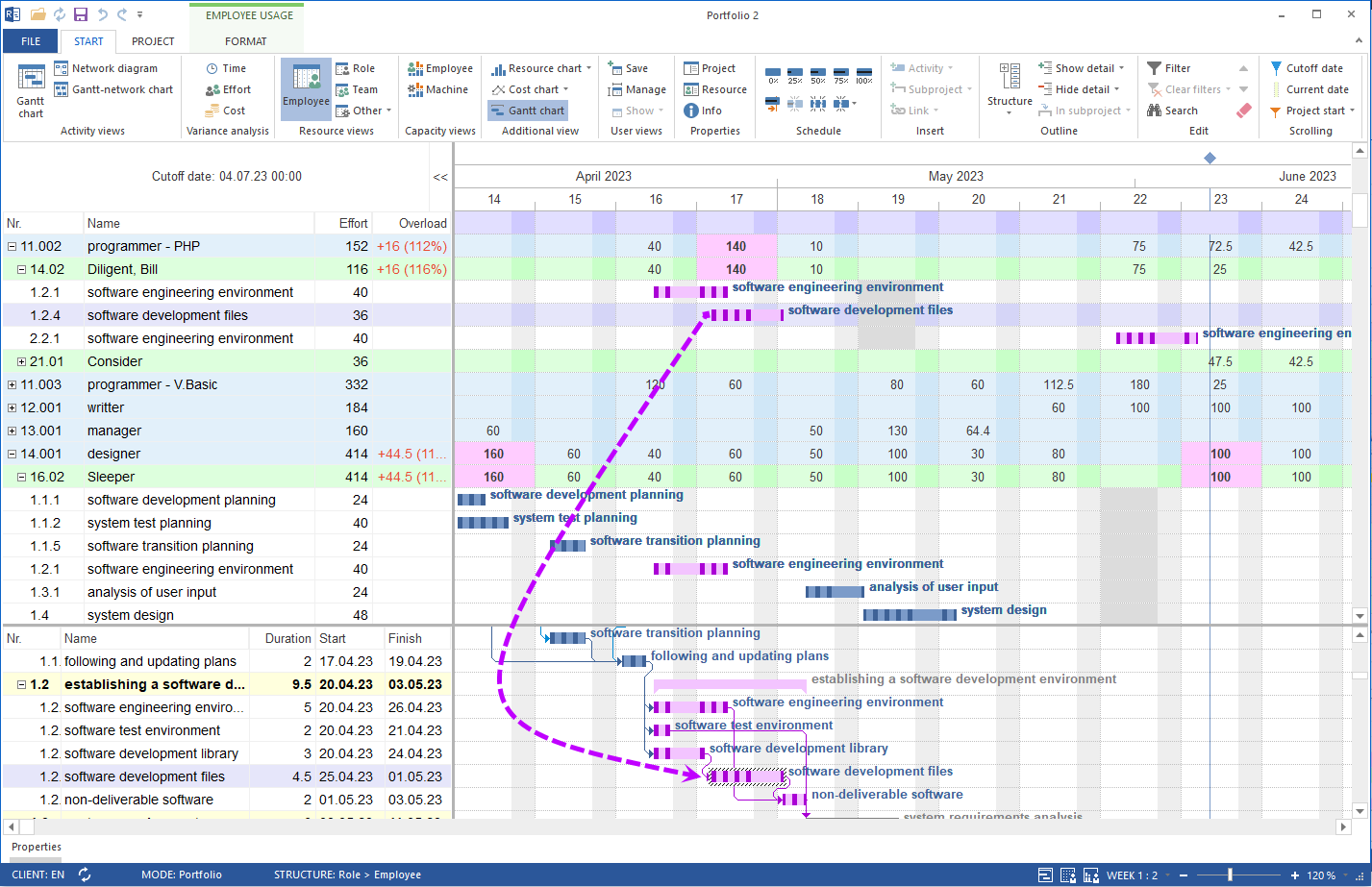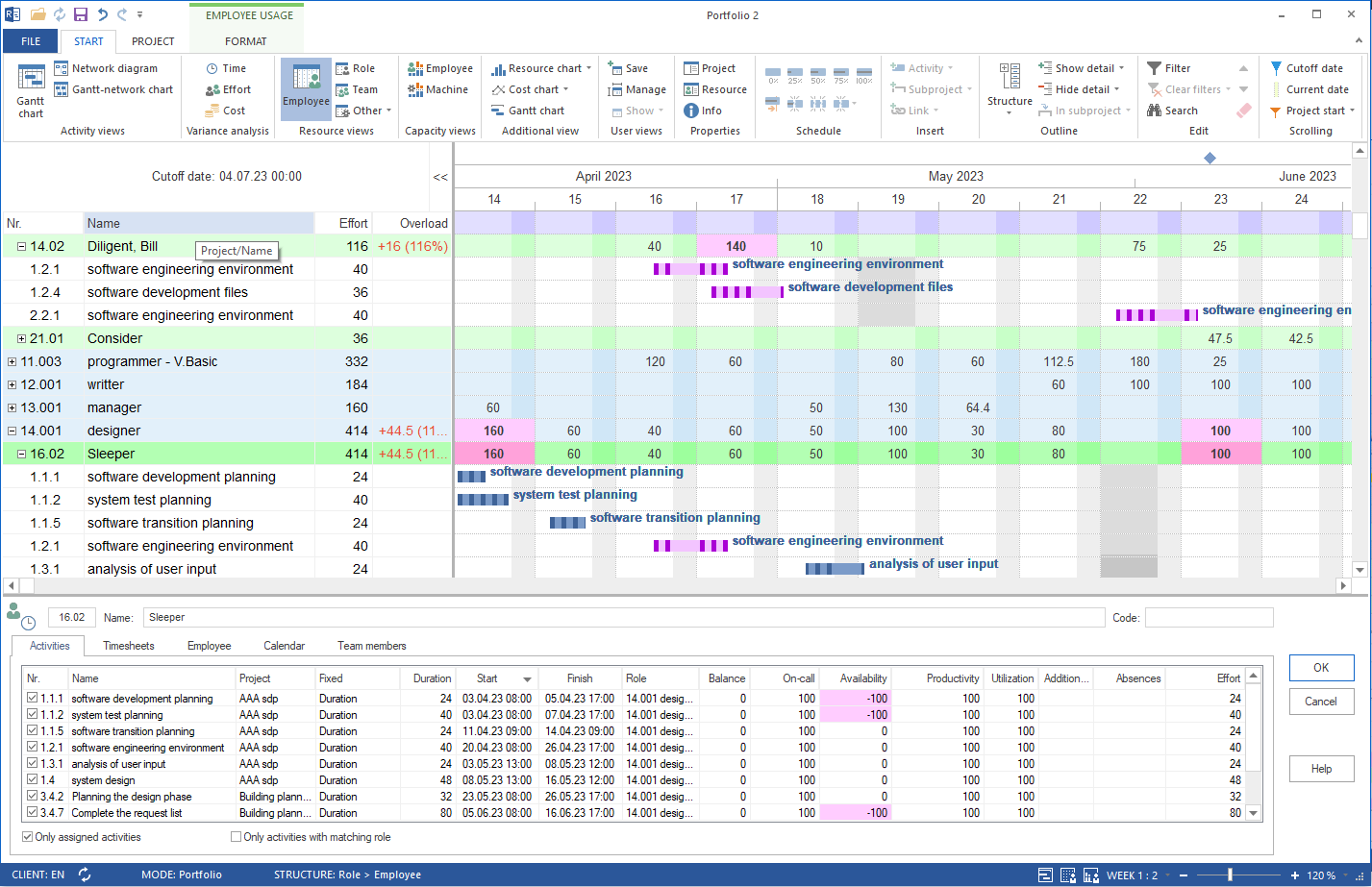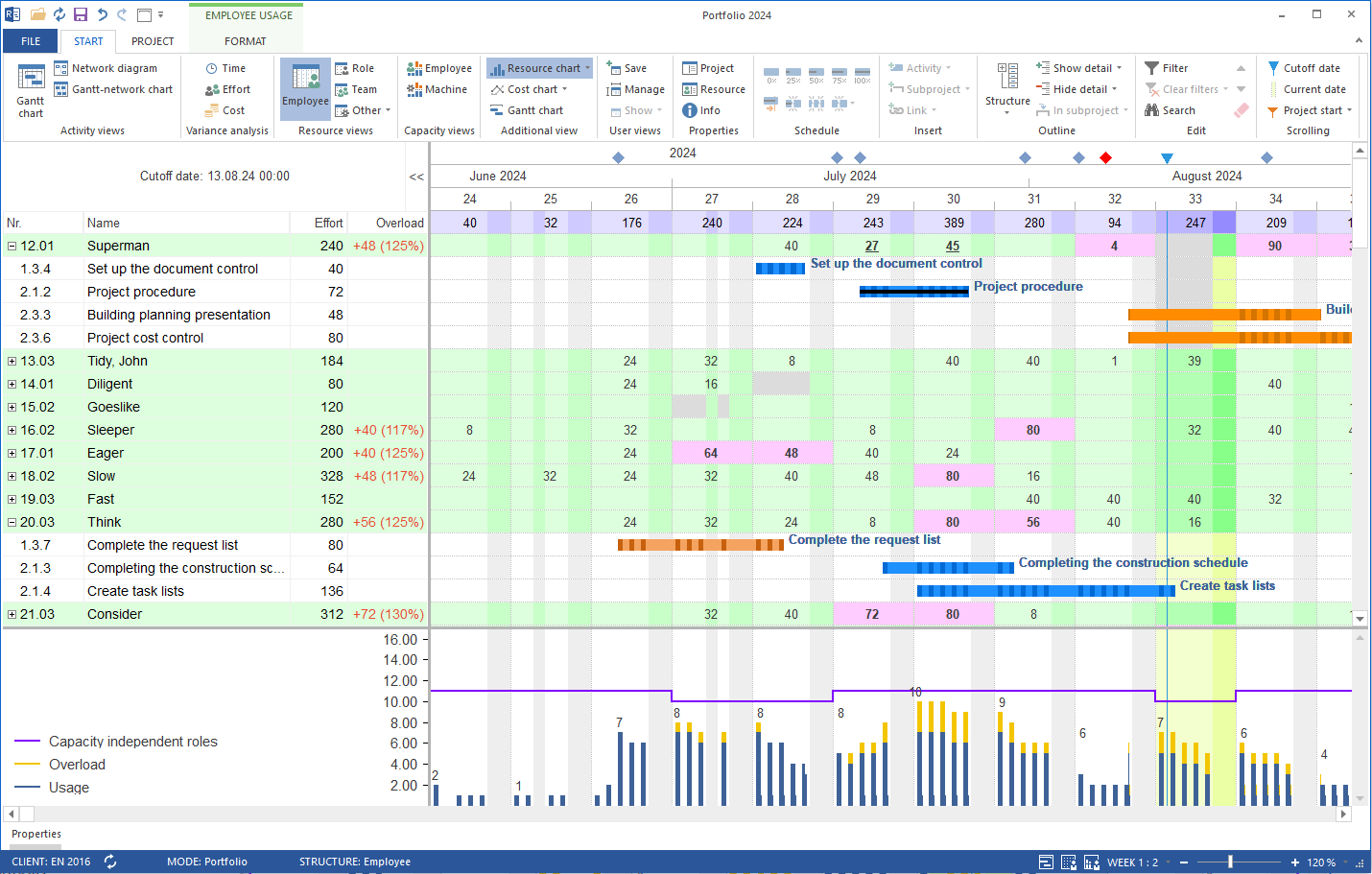Software for staff scheduling


To successfully manage projects, detailed planning of all resources is necessary. When it comes to personnel deployment planning, Rillsoft Project provides the following options:
- Scheduling employees based on assigned roles.
- Assigning employees to a task directly as a personnel resource without prior role specification.
- Selecting capacity or deadline-oriented project planning.
Rillsoft Project’s personnel deployment planning supports you with the following features:
- Planned roles serve as filters when assigning employees, showing only those with the appropriate qualifications when planning personnel resources.
- During employee assignment, the program indicates whether they have enough available time to fulfill their tasks.
- Conflict resolution for overlaps - when scheduling, both the employee’s free time and other activities in projects are checked, highlighting any workload issues in color.
- Employees can be assigned to different tasks with varying workloads in parallel.
- Employees can be assigned to tasks under different roles.
- It’s possible to temporarily remove an employee from the project and assign them to other activities if needed.
- The software provides various views for optimizing role and employee workloads.
- Team membership and work schedules (including holidays and specific holidays) in the project calendar are considered at all planning stages.
- The ratio of scheduled to available employee work hours is calculated and displayed per time unit.
- Employee shortages are color-coded for quick identification.
- Reports for holiday management can be generated.
Personnel deployment planning software can be used to efficiently organize employee work hours and resources while ensuring compliance with operational requirements, legal regulations, and employee preferences.
Cross-project employee planning software allows for efficient allocation of employees to different projects, ensuring optimal resource utilization and considering individual skills and availability.
Holiday management in personnel deployment planning software enables the efficient management of employee vacations and ensures smooth business continuity.

